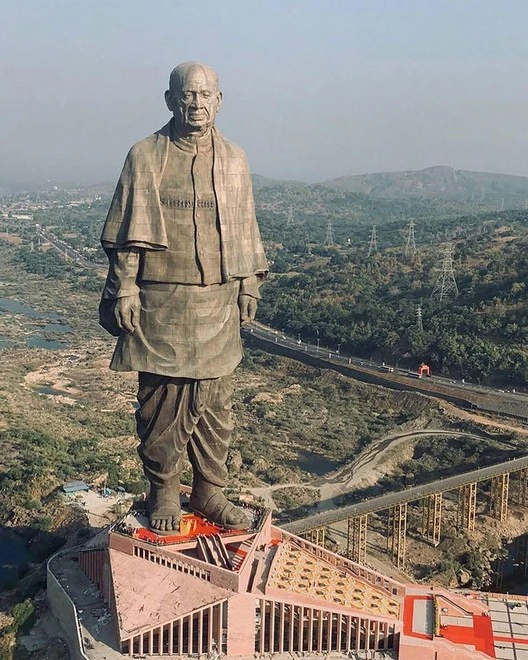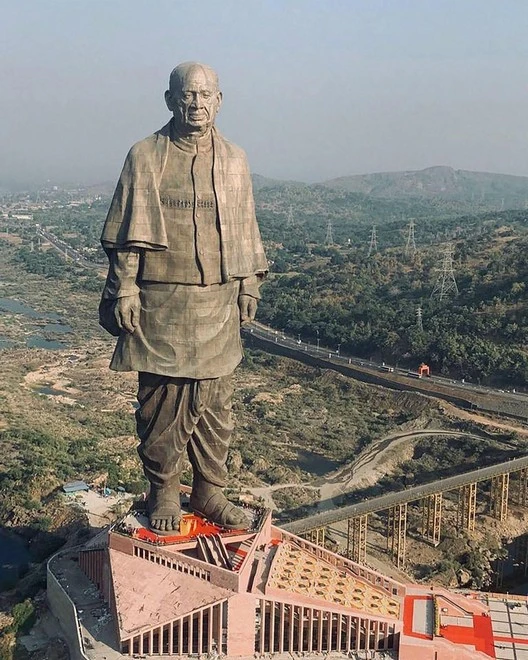Generated by Contentify AI

Introduction
Located in the western Indian state of Gujarat, the Statue of Unity stands as a symbol of national pride, unity, and strength. Designed to honor Sardar Vallabhbhai Patel, a key figure in India’s struggle for independence, the statue serves as a reminder of Patel’s contributions to the country’s unity. As the world’s tallest statue, it has become a cultural landmark attracting visitors from around the globe. The design and construction of the statue draw inspiration from various aspects of Indian culture, making it a significant representation of the nation’s rich heritage. Its location overlooking the Narmada River adds to its cultural significance, as the river holds spiritual importance in Indian culture. Through its sheer size and symbolism, the Statue of Unity has become a powerful cultural icon, embodying the values of unity, diversity, and perseverance that are integral to India’s identity.
The History of the Statue of Unity
Crafted to honor the legacy of Sardar Vallabhbhai Patel, the Statue of Unity stands as a testament to India’s cultural richness and historical significance. Patel, known as the “Iron Man of India,” played a pivotal role in unifying the country post-independence. The statue’s design and construction intricately weave cultural elements, showcasing India’s artistic prowess. Situated by the Narmada River, a sacred water body in Indian tradition, the statue’s location adds spiritual depth to its cultural importance. The sheer magnitude of the statue not only symbolizes unity but also serves as a beacon of strength and resilience, embodying the core values of Indian heritage. The Statue of Unity’s historical roots and cultural symbolism make it a revered national treasure, resonating with visitors and locals alike.
Architectural Design and Symbolism
The architectural design of the Statue of Unity is a testament to India’s rich cultural heritage and historical significance. The statue’s intricate craftsmanship and grandeur pay homage to Sardar Vallabhbhai Patel‘s legacy, symbolizing unity and strength. Drawing inspiration from traditional Indian art and architecture, the design captures the essence of the country’s diverse cultural tapestry. The symbolism embedded within the statue reflects the values of resilience, unity, and national pride that are deeply rooted in Indian culture. Moreover, the strategic location of the statue overlooking the Narmada River adds a spiritual dimension, further enriching its cultural significance. Through its architectural magnificence and symbolic representation, the Statue of Unity stands as a powerful cultural icon, embodying the ethos and values that define India’s cultural identity.
Impact on Local Tourism and Economy
The Statue of Unity not only serves as a monumental tribute to Sardar Vallabhbhai Patel but also embodies the essence of unity and cultural pride. The architectural marvel draws inspiration from India’s rich cultural heritage, intricately weaving traditional elements into its design. Situated by the sacred Narmada River, the statue’s location adds a spiritual significance that resonates with the country’s cultural beliefs. Its symbolic representation of strength, resilience, and unity reflects the core values deeply ingrained in Indian culture. Moreover, the statue’s impact on local tourism and economy has been substantial, attracting visitors from far and wide and stimulating economic growth in the region. As a cultural icon, the Statue of Unity stands as a powerful symbol of India’s cultural richness and historical legacy, leaving a lasting impression on all who visit it.
Controversies Surrounding the Statue
Controversies Surrounding the Statue
Despite its cultural significance, the Statue of Unity has not been without controversy. Critics argue that the enormous cost of the statue could have been better allocated to address pressing social and economic issues in India. Some have raised concerns about the displacement of local tribal communities during the construction of the statue, highlighting the ethical implications of such development projects. Additionally, there have been debates regarding the historical accuracy of portraying Sardar Vallabhbhai Patel as a unifying figure, with dissenting voices pointing out his complex role in certain historical events. These controversies have sparked important discussions about the prioritization of cultural symbols and monuments in a country grappling with various social challenges. Despite the differing perspectives, the controversies surrounding the Statue of Unity underscore the need for a nuanced understanding of its cultural significance and the broader socio-political context in which it exists.
Conclusion
The controversies surrounding the Statue of Unity have sparked important dialogues about the allocation of resources and the ethical considerations of monumental projects. Despite its cultural significance, critics have raised valid concerns about the socio-economic impact of such massive investments, suggesting that funds could have been utilized more effectively to address pressing issues. The displacement of local tribal communities during the statue’s construction has also been a point of contention, shedding light on the complexities of development projects in culturally significant areas. Furthermore, debates regarding the historical accuracy of portraying Sardar Vallabhbhai Patel as a unifying figure have highlighted the nuanced perspectives surrounding the statue’s symbolism. These controversies serve as reminders of the need for a holistic understanding of cultural monuments, considering their impact on society and the values they represent in the broader socio-political landscape.



